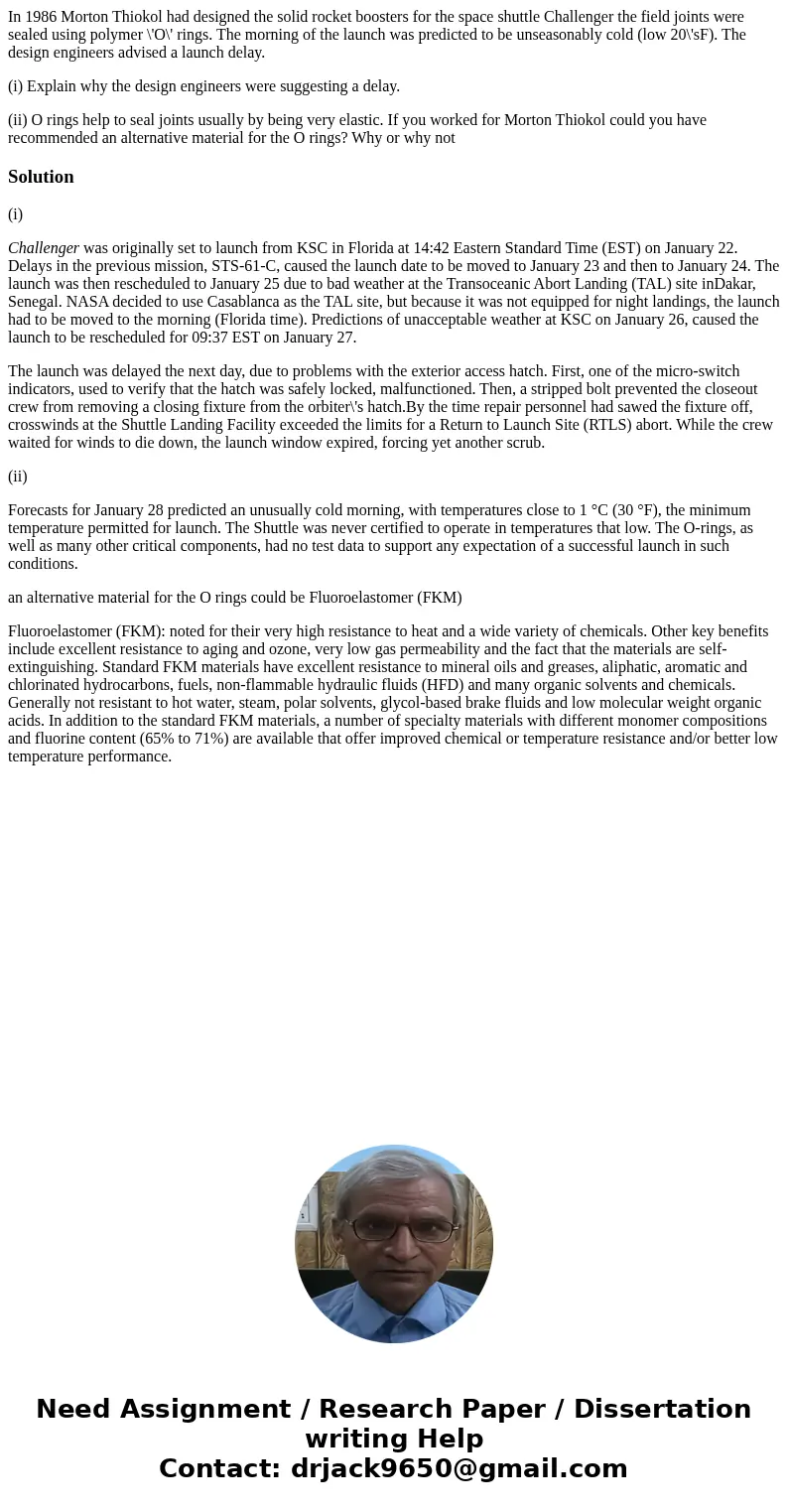In 1986 Morton Thiokol had designed the solid rocket booster
In 1986 Morton Thiokol had designed the solid rocket boosters for the space shuttle Challenger the field joints were sealed using polymer \'O\' rings. The morning of the launch was predicted to be unseasonably cold (low 20\'sF). The design engineers advised a launch delay.
(i) Explain why the design engineers were suggesting a delay.
(ii) O rings help to seal joints usually by being very elastic. If you worked for Morton Thiokol could you have recommended an alternative material for the O rings? Why or why not
Solution
(i)
Challenger was originally set to launch from KSC in Florida at 14:42 Eastern Standard Time (EST) on January 22. Delays in the previous mission, STS-61-C, caused the launch date to be moved to January 23 and then to January 24. The launch was then rescheduled to January 25 due to bad weather at the Transoceanic Abort Landing (TAL) site inDakar, Senegal. NASA decided to use Casablanca as the TAL site, but because it was not equipped for night landings, the launch had to be moved to the morning (Florida time). Predictions of unacceptable weather at KSC on January 26, caused the launch to be rescheduled for 09:37 EST on January 27.
The launch was delayed the next day, due to problems with the exterior access hatch. First, one of the micro-switch indicators, used to verify that the hatch was safely locked, malfunctioned. Then, a stripped bolt prevented the closeout crew from removing a closing fixture from the orbiter\'s hatch.By the time repair personnel had sawed the fixture off, crosswinds at the Shuttle Landing Facility exceeded the limits for a Return to Launch Site (RTLS) abort. While the crew waited for winds to die down, the launch window expired, forcing yet another scrub.
(ii)
Forecasts for January 28 predicted an unusually cold morning, with temperatures close to 1 °C (30 °F), the minimum temperature permitted for launch. The Shuttle was never certified to operate in temperatures that low. The O-rings, as well as many other critical components, had no test data to support any expectation of a successful launch in such conditions.
an alternative material for the O rings could be Fluoroelastomer (FKM)
Fluoroelastomer (FKM): noted for their very high resistance to heat and a wide variety of chemicals. Other key benefits include excellent resistance to aging and ozone, very low gas permeability and the fact that the materials are self-extinguishing. Standard FKM materials have excellent resistance to mineral oils and greases, aliphatic, aromatic and chlorinated hydrocarbons, fuels, non-flammable hydraulic fluids (HFD) and many organic solvents and chemicals. Generally not resistant to hot water, steam, polar solvents, glycol-based brake fluids and low molecular weight organic acids. In addition to the standard FKM materials, a number of specialty materials with different monomer compositions and fluorine content (65% to 71%) are available that offer improved chemical or temperature resistance and/or better low temperature performance.

 Homework Sourse
Homework Sourse